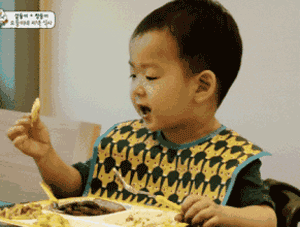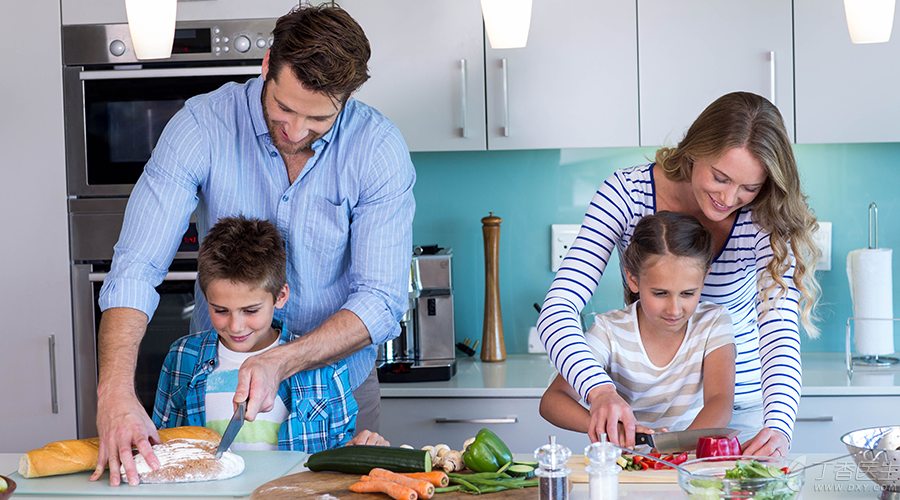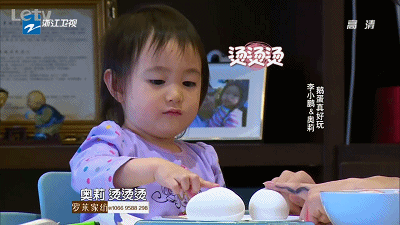
What do parents do when they eat with their children? If you just prepare the food, put it in front of the child and urge him to finish it, it would be too boring!
To tell you quietly, the more number-talk children have with their parents in their early days, the better their mathematical thinking ability will be in the future.
In other words, if parents want to cultivate their children’s interest in mathematics, the simplest way is to consciously use numbers in actual dialogues.
The three meals a day is the best time to talk with children about numbers. Take advantage of this opportunity to train children’s mathematical thinking ability.

Method 1: Tell the amount of food!
Quite simply, if you just bring the bowl full of food to the child every day, then now you only need to add one link: put the food in the bowl in front of the child and count the quantity naturally.
In the enlightenment stage of children’s mathematical concepts, the first goal is to [hear and say the names of numbers in different situations]. Imperceptibly, children learn the sequence of numbers, one-to-one corresponding mathematical concepts, and will gradually understand that the last number spoken is the total number.
Take chestnuts:
Dad: [Tingting, Mom prepared strawberries, milk and buns for breakfast today. 1, 2, 3, give you 3 strawberries. 1, 2, 3, give me 3 strawberries. 1, 2, 3, give Mom 3.]
Daughter: [(ate all the strawberries in an instant) Dad, can I still want to eat strawberries? ]
Dad: [OK, 1, 2, 3, 4, 5… (count and put in the children’s bowl) Five strawberries, is that enough? ]
Daughter: [En! ]
Dad: [I’ll have some buns! (Count loudly and take it yourself) 1, 2, 3, 4, 5, 6… 19, 20! I want 20! ]

Increased challenge (4 +):
1. Ask the child to help prepare food/tableware before meals, such as [We still need 4 forks, can you go to the kitchen and get one for everyone? ]
2. Compare the amount of two foods. For example, 3 strawberries and 3 blueberries, understanding that the same amount of items may look very different.
Reduce challenge (3 years-):
1. Establish the concept of [1]: Give everyone 1/1 spoon/1 piece/1 bowl of food.
2. Establish [many] concepts: [I ate one and there are many more! ]
Method 2: Create opportunities to discuss and cut shapes with children.
At ordinary times, parents may not have time to play plasticine with their children, so make full use of the dining time and play with their children with safe knives! There are many foods that can be cut, such as bread slices, sandwiches, egg cakes, etc.
Take chestnuts:
Mom: [Mingming, let’s cut the sandwich in half and share it with everyone. Do you want triangular or rectangular? ]
Son: [Triangle! ]
Mom: [OK, then I’ll think about how to cut it. I can cut it diagonally (while talking). Cut it. I cut a sandwich into two triangles of the same size! Would you like to try them on? ] (Be prepared for the various kinds of shapes that the child may cut. With expectation, discuss with the child the size, name and quantity of the shapes he cuts. )
If the child is interested in letters or numbers recently, it is not impossible to cut out a number or letter pattern.

Increased challenge (4 +):
1. Parents and children challenge each other to divide the slices of bread into a specified number. [Can you cut this sandwich into… pieces? ]
2. Encourage children to cut bread slices in different ways, for example, one rectangle and two squares, one rectangle and two triangles, two triangles and two squares, etc., and spell out various patterns with the obtained shapes.
3. Provide children with cutting molds of different shapes and play more shapes with children (car models, circles, crescent moon, heart shapes, etc.).
Reduce challenge (3 years-):
1. Divide a slice of bread into 2 parts directly by hand.
2. Try to paint/draw various lines or shapes on bread slices with jam or chocolate sauce.

Parents, the next time you eat with your baby, don’t just think about urging him to finish eating quickly, make good use of your meal time and interact with your child about numbers.
